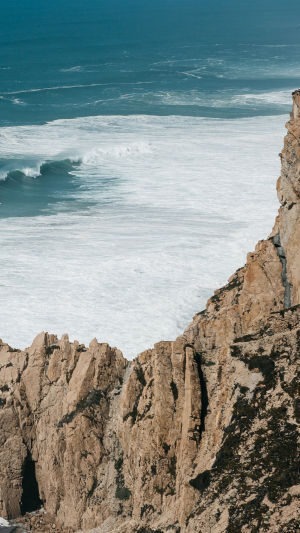Coastal erosion is a phenomenon where the sediment input to the coast is less than the output due to waves, tides, and currents, resulting in a continuous reduction of coastal seabed sediments and thus a receding coastline.
Coastal erosion can create a variety of topographies, causing the shoreline to sink, flooding estuaries and lowlands, and causing great damage to coastal residents. To prevent coastal erosion, people manage to find a variety of means to protect beaches.
1. Causes of formation
Waves are a major factor in coastal erosion. The waves that surge on the sea mechanically impact and scour the shore, compressing the air between the pores of the rocks, thus exerting great pressure on the rocks and causing them to separate.
Meanwhile, the debris mixed with the waves abrades the shore, causing the rocks to diminish.
The chemicals contained in the seawater and the rocks work together, causing the rocks to dissolve and break up. Under the erosion of seawater, the coast forms a variety of landforms, such as sea caves, sea cliffs, and sea platforms.
2. Protection measures
To reduce the erosive effect of waves on beaches, protective and wave-absorbing engineering facilities are built to increase the friction at the bottom of the shore, while man-made engineering works are used to encourage the siltation of sediments and slow down coastal erosion.
Common means of coastal protection include the construction of dykes, landfilling, and beach stabilization, and the use of vegetation to strengthen beaches.
Landfilling is a direct, effective, and economical way to combat coastal erosion. Suitable sediment can be collected from the sea or the land and filled into the shoreline where it has been eroded by the waves. However, the filled sand is still susceptible to wave erosion and therefore needs to be filled regularly.
Drift dams, commonly referred to as 'ding dams', serve as a prevalent method of coastal protection. Their primary function is to diminish wave energy and encourage sediment accumulation. Along extensive coastlines, drift dams are often constructed in clusters to effectively manage coastal erosion. The sediment intercepted by these structures is deposited onto the beach, effectively mitigating erosion along that particular stretch of coastline.
Coastal embankments, commonly referred to as 'sea walls' or 'sea ponds', are structures constructed along estuaries and coastal regions to shield the coast from the impact of sea tides and waves.
Typically positioned near the high tide line of the plain, these water-retaining structures serve multiple purposes. They not only safeguard against coastal erosion but also protect against flooding and help regulate tidal levels.





